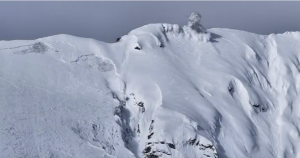26 February 2018

The artificial triggering of an avalanche at the Vallée de la Sionne, in Switzerland, uses explosives to disrupt a snowpack to study how avalanches move downslope.
Credit: Swiss Federal Institute for Snow and Avalanche Research.
WASHINGTON, DC — Avalanches kill more than 150 people worldwide each year, most of whom are snowmobilers, skiers and snowboarders, according to National Geographic. Several American Geophysical Union experts are available to comment on the science of avalanches and the hazards they pose.
Chris Borstad is Associate Professor of Snow and Ice Physics at the University Centre in Svalbard, Norway. He studies the processes related to cracks and failures in snow and ice, from destructive snow avalanches to iceberg calving to ice shelf collapse.
Email: [email protected]
Phone: +47 79 02 64 14 (GMT+1)
*Note: Chris Borstad will be unavailable from March 8-18.
Dieter Issler has a background as a physicist and is presently a Senior Specialist with the Natural Hazards Division of the Norwegian Geotechnical Institute in Oslo. He does both research―mainly on the modeling of gravity mass flows (snow avalanches, quick-clay landslides, subaqueous landslides and turbidity currents), but also experimental work on snow avalanche dynamics―and consulting (mostly hazard mapping in Norway).
Email: [email protected]
Phone: +47-469-87-346 (GMT+1)
*Note: Dieter Issler will be in Japan (GMT+9) until March 17, but will still be available for interviews.
Nathalie Vriend is a Royal Society Dorothy Hodgkin Fellow in the department of Applied Mathematics and Theoretical Physics at the University of Cambridge in the United Kingdom. Her expertise is using laboratory and field experiments to research granular materials in geophysical applications. She studies the dynamics of snow avalanches and sand dune migration.
Email: [email protected]
Phone: +44 1223 764043 (GMT)
###
The American Geophysical Union is dedicated to advancing the Earth and space sciences for the benefit of humanity through its scholarly publications, conferences, and outreach programs. AGU is a not-for-profit, professional, scientific organization representing more than 60,000 members in 139 countries. Join the conversation on Facebook, Twitter, YouTube, and our other social media channels.
Looking for additional experts? Find experts in various topic areas in the AGU Newsroom.
Lauren Lipuma
+1 (202) 777-7396
[email protected]